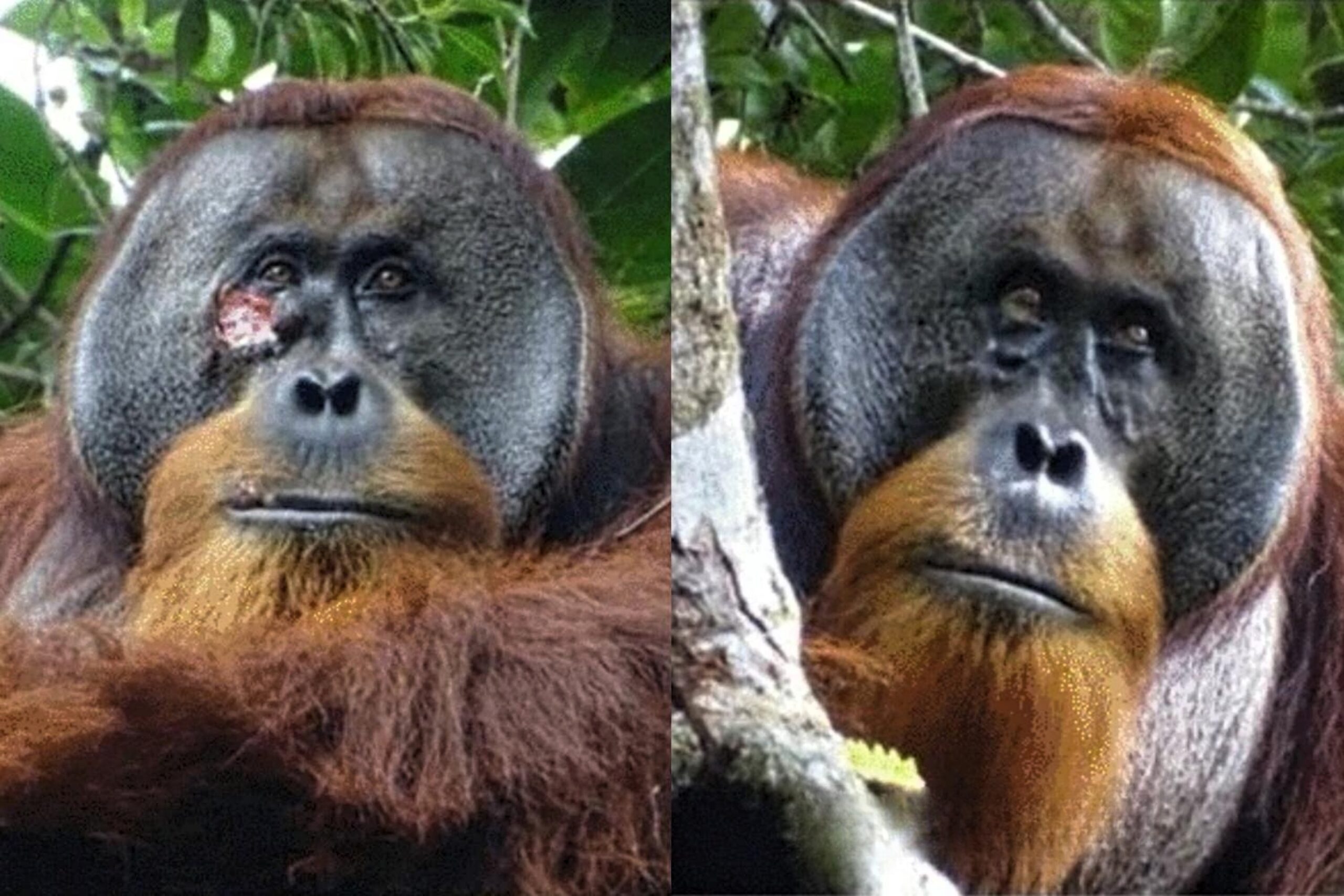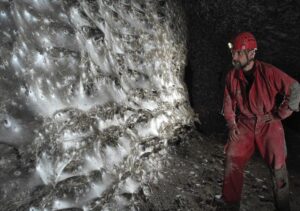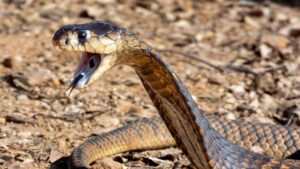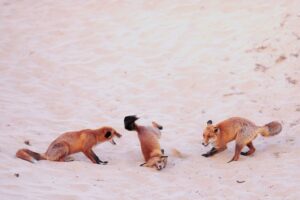For the first time, an animal has been observed treating a wound with medicinal plants.
Biologists in Indonesia noticed Rakus, a male Sumatran orangutan living in Gunung Leuser National Park, behaving oddly in June 2022. Rakus was making “long calls,” an orangutan vocalization generally understood to signal conflict between males. He also had a large lesion below his right eye.
In this month’s Scientific Reports, a multi-disciplinary team links the wound to the potential fracas — and then describes a never-before-seen event.
Monkey medicine
Shortly after he sustained the injury, Rakus started “selectively” ripping leaves off a certain medicinal tree, chewing them, and applying the juice to the raw area.
The ape had selected Akar Kuning (Fibraurea tinctoria), which locals use to treat diabetes and malaria.
“As a last step, he fully covered the wound with the chewed leaves,” the study noted.
It took several minutes. Five days later, the wound was closed. Within a month, it had fully healed.
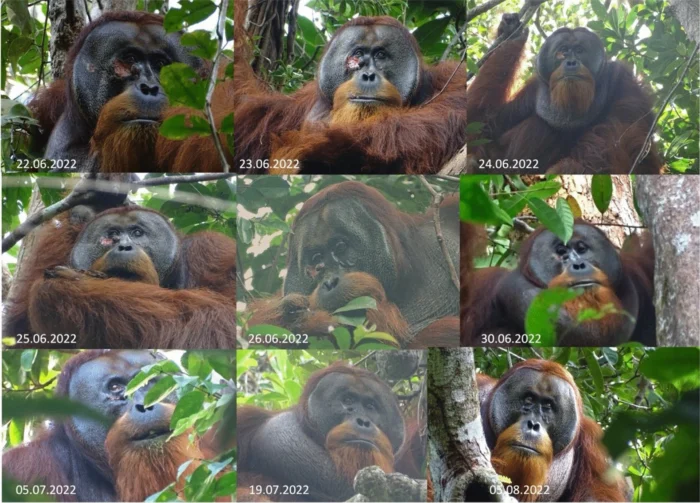
Photos: Laurmer et. al
Various factors indicated that Rakus’ behavior was intentional. It took a long time to apply the salve, and the ape rested almost twice as long as usual in the days after he applied it.
However, he might have accidentally discovered the treatment, said lead study author Isabella Laurmer of the Max Planck Institute in Germany.
Orangutans also eat Akar Kuning. It’s possible Rakus touched the wound while feeding and noticed its pain-relieving effects — then, understandably, kept going.
‘Socialized’ healthcare?
He also might have picked up on the technique from his neighbors, Laurmer said. Even though it’s the first time anyone has witnessed an animal treating a wound medicinally, the behavior could exist elsewhere. African and Asian great apes are known to actively treat wounds, although in different ways. One method involving insects, in particular, grabbed researchers’ attention and suggested cultural behavior.
“[This] provides new insights into the existence of self-medication in our closest relatives and in the evolutionary origins of wound medication more broadly,” the paper suggested. “It is possible that there exists a common underlying mechanism for the recognition and application of substances with medical or functional properties to wounds, and that our last common ancestor already showed similar forms of ointment behavior.”
